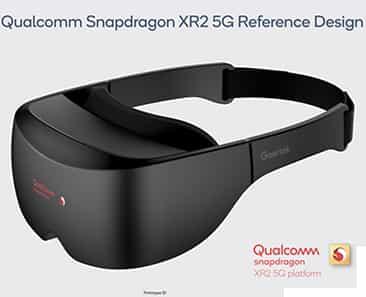Extended Reality : Key Features, Benefits & Challenges
Advertisement
What is Extended Reality (XR)?
Extended Reality (XR) is not a single technology but an umbrella term that encompasses a spectrum of immersive technologies that merge the real and virtual worlds. The core idea is to extend our reality by incorporating digital elements or by creating entirely new digital realities.
XR can be divided into three main categories:
-
Virtual Reality (VR): This is a technology of full immersion. VR places the user entirely within a simulated digital environment, completely replacing their real world surroundings. When using a VR headset, the user’s sensory input (sight and sound) is cut off from reality and replaced by a computer generated world, making them feel physically present in that new space.
-
Augmented Reality (AR): This is a technology of superimposition. AR does not replace the user’s reality but instead overlays digital information such as text, graphics or animations onto their view of the real world. The goal is to enhance the user’s perception of reality by providing contextually relevant data without obscuring their surroundings. The ultimate goal is to create comfortable, “Everyday AR Glasses.”
-
Mixed Reality (MR): This is the most advanced form of XR, representing a true hybrid of the real and virtual. In MR, digital objects are not just overlaid on the real world (as in AR), but they are spatially aware and can interact with real world objects in real time. This creates an environment where physical and digital elements coexist and influence each other.
 Image Courtesy : Qualcomm
Image Courtesy : Qualcomm
The figure depicts XR Headset based on Qualcomm Snapdragon XR2 5G Reference design.
Benefits of Extended Reality
The primary benefit of XR is its potential to create powerful, immersive, and scalable experiences that are accessible on lightweight and comfortable devices. Following are some of the advantages of Extended Reality(XR).
-
Immersive learning and training : XR allows users to enter simulated environments where they can practise tasks in realistic scenarios without real‐world risk. For example, trainees can rehearse complex or hazardous operations safely. This can improve retention, engagement and preparedness.
-
Remote collaboration and visualisation : XR enables people in different locations to meet in shared virtual or augmented spaces, visualise 3D models together, and interact as though co-present. This makes teamwork more effective when physical travel or co-location is difficult.
-
Enhanced product design, prototyping & visualisation : Designers, engineers and architects can use XR to see 3D models in context, iterate more quickly, and spot spatial or ergonomic issues early. This reduces reliance on costly physical prototypes and shortens time-to-market.
-
Improved customer engagement & experience : For example, XR can let customers “try on” or “place in their environment” a product virtually (AR), or feel immersed in a brand experience (VR). This leads to deeper interaction, higher satisfaction and potentially stronger sales.
-
Seeing/doing things otherwise impossible (or impractical) : XR opens up possibilities such as exploring virtual worlds, visualising hidden structures (e.g., anatomy, architecture), or training for rare or dangerous events. Thus it expands the “what’s possible” for many industries.
Challenges of Extended Reality
Following are some of the limitations of Extended Reality.
-
High cost and hardware constraints : The initial investment in XR devices, content creation and supporting infrastructure remains substantial. Also current XR hardware may be heavy, have limited battery life, and require strong computational power. These factors limit adoption, especially for smaller businesses or individuals.
-
Technical and content development challenges : Creating effective XR experiences requires specialised skills (3D modelling, interactive design), and many platforms suffer from limited content libraries, poor interoperability or immature standards. Without broad content and platform maturity, the user experience may suffer.
-
Health, comfort and usability concerns : Extended use of XR headsets can lead to eye strain, motion sickness, neck/shoulder fatigue, and discomfort due to device weight or poor ergonomics. This limits how long users can engage and who is comfortable using it.
-
Privacy, data and ethical issues : XR devices often collect detailed data (e.g., gaze tracking, biometrics, spatial environment). That raises concerns about user privacy, data security, consent and potential misuse. As XR penetrates sensitive domains (healthcare, education), these become significant risks.
-
Risk of social isolation or over-immersion : While XR can connect remote users, it may also encourage isolation from the physical world. Excessive immersion or substitution of real-life interactions with virtual ones can impact social behaviour and mental health.
Summary:
Extended Reality (XR) encompassing augmented, mixed and virtual reality technologies. It provides compelling advantages such as immersive training, enhanced visualization, remote collaboration and enriched customer engagement by merging digital content with real world contexts.
Advertisement
 RF
RF





